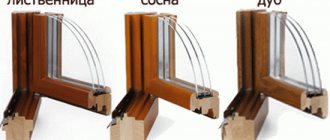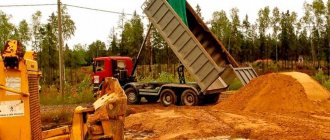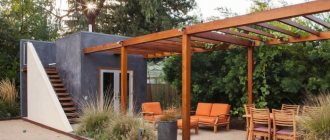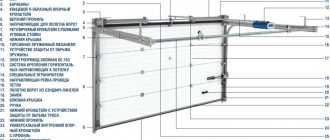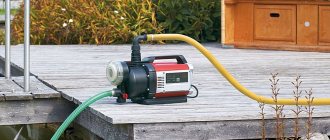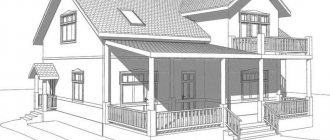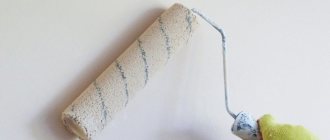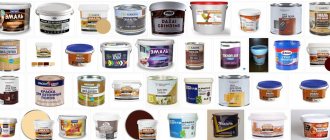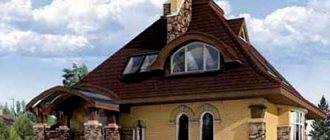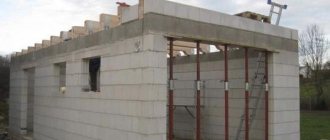Repairs involve the use of environmentally friendly materials that do not harm health and have minimal impact on the environment. Most of the materials presented in stores do not meet environmental requirements. Varnishes, paints, and floor coverings can emit the following hazardous substances:
- formaldehyde;
- phthalates;
- styrene;
- heavy metals.
And this is not a complete list of potentially dangerous compounds.
Watch a video clip from the eco-house construction site (18 min)
Eco-friendly materials for renovation
Eco-friendly materials used for repairs may contain these substances only in minimal concentrations or not at all. You can find such products thanks to eco-labels (“Leaf of Life”, “Northern Swan”, Ecolabel). Building materials with such icons are safe for both health and the environment. You should also pay attention to such designations as FSC (confirms the environmental friendliness of wood materials), E1 HCHO (indicates low formaldehyde content), M1 (low emission of volatile substances).
Harmless insulation materials
Ecowool
One of the most environmentally friendly types of insulation. It does not emit harmful, volatile substances into the air and has a high thermal insulation ability. It fits tightly to the base, leaving no gaps or bridges of cold, which cannot be said about a slab insulation product.
The process of insulating a house with ecowool
The material is not flammable - this is confirmed by many tests carried out by the manufacturers. In addition, due to its insulating ability, it prevents the rapid spread of fire in the event of a fire. The material contains a natural boron antiseptic, which does not allow fungal infections to form, and insects and rodents do not live in it.
Ecowool for building insulation
Foam glass
Insulation, which is widely used for thermal insulation of buildings and structures, with good characteristics confirmed by a quality certificate:
- fire resistance;
- moisture resistance;
- strength;
- non-flammability;
- durability;
- strength;
- resistance to chemical influences.
The process of laying foam glass The only limitation for the use of this material is its cost.
Wave
Natural insulator made from flax production waste. It is produced in the form of a mat in which thin flax fibers are bonded using polymers, which are unsuitable for further processing.
The product is non-flammable and is used for both external and internal insulation. It has proven itself well as a sound insulator.
During production, the material is treated with antiseptic drugs, so it is not susceptible to rotting and infection by fungi.
The process of insulating the attic with special mats
The process of attaching mineral wool to walls You can often find mats with an aluminum film on one side, which allows them to reflect heat rays. Such mats, installed with film insulation to the room, allow you to create the effect of a thermos, which helps to save thermal energy.
How to choose putty
There are three groups of putties:
- starting ones, for leveling the surface;
- finishing, to create a decorative texture;
- universal, which can be used for leveling and decoration.
The mixtures are sold ready-made and dry, and are available in cement, gypsum and polymer bases. Polymer putties include acrylic, polymer-cement, and latex putties. Cement and gypsum putties have a natural composition. A polymer mixture can be chosen if gypsum and cement are not suitable. Many polymers do not allow walls to “breathe” and are not subject to decomposition in natural conditions.
To avoid accidentally purchasing a counterfeit product, you should check the documentation and safety certificates from the seller and carefully study the composition and characteristics of the product. Superplasticity, quick drying, fire resistance - properties that natural materials cannot have. You should also avoid purchasing mixtures with a strong odor.
Comparison of the performance of aerated concrete blocks, expanded clay blocks and ceramic bricks
Basic radiation exposure standards (permissible dose limits) are specified and clarified in sanitary and hygienic federal norms and rules, such as NRB - 99/2009, OSPORB - 99/2010, etc. Up to 0.2 microsievert per hour (which corresponds to values up to 20 microroentgen per hour) is the safest level of external irradiation of the human body when the “background radiation is normal.”
The upper limit of the permissible dose rate is approximately 0.5 μSv/hour (which is approximately equal to 50 μR/hour). Microroentgen (microsievert) per hour and becquerel cannot in any way be equated to each other, since they serve to measure different parameters.
To study the safety of wall materials, there is a special device - a dosimeter, which measures radiation precisely in a unit of measurement - micro-roentgen / hour). So let's measure the most popular materials for construction and see what data we get. Let's start with aerated concrete blocks. To do this, we apply the device to the surface of the masonry and see an indicator of 9 microroentgens/hour. (μR/h).
Dosimetry of aerated concrete blocks
Next comes an expanded clay concrete block with a radioactivity index of 24 μR/h. This is 3 times higher than that of an aerated concrete block.
Dosimetry of expanded clay concrete
For ceramic facing bricks the indicator is 16.
Dosimetry of ceramic facing bricks
So, as we see from the table data, all indicators are within the acceptable norm (50 microR/h). However, aerated concrete block has the best performance.
| Material/radioactivity indicator on the dosimeter, µR/h | Aerated concrete block | Expanded clay concrete block | Ceramic brick |
| 9 | 24 | 16 |
What to make the ceiling from
The most environmentally friendly, versatile and economical option is whitewashing. This time-tested method is still relevant. The result is an aesthetic appearance and the absence of harmful fumes. For whitewashing, lime, chalk, and water-based paint are used.
Another option is wallpaper. This is an affordable and environmentally friendly way to decorate the ceiling in a living space if you choose the right materials. Although there are not many options for wallpaper for the ceiling in stores, you can still choose something to suit your taste.
Cork and wood panels are an environmentally friendly and fairly economical option. It is important to check the safety of the compounds with which the wood has been pre-treated.
Fabric stretch ceilings are a rather expensive and rare option for eco-renovation. They should not be confused with satin, which are similar to satin only in appearance. The environmental friendliness of fabric ceilings is relative, since the fabric is artificial, painted with not always safe paint and treated with fire-resistant impregnation.
Concrete
All over the world, concrete is used as a durable, inexpensive material that can easily withstand the onslaught of time and the elements. Concrete has now come in a variety of new colors and shapes, turning countertops and flooring into works of art.
The environmental friendliness of the material is a controversial topic. On the one hand, concrete production requires little energy, and therefore reduces electricity consumption. It is also virtually waste-free, as it is made to order for each project. There are no toxic substances in concrete that will evaporate at normal temperatures. In addition, concrete is made using ash, a byproduct of coal products that would otherwise be sent to landfills.
On the other hand, concrete production produces large amounts of carbon dioxide, accounting for about 7% of global CO2 emissions. Some companies have already started using a different type of cement, which has helped to sharply reduce emissions, but such concrete is several times more expensive than usual.
The industry as a whole is changing, production will become more environmentally friendly in the future. Therefore, concrete can become the material of the future.
Eco-friendly wall paint
Many people choose paint based only on shade and cost. But this approach is fundamentally wrong - the choice should be made based on composition and effectiveness. Eco-friendly paint intended for walls should not contain:
- formaldehyde;
- phthalates;
- styrene;
- ethylbenzene;
- kerosene;
- heavy metals.
You should also pay attention to the content of volatile organic compounds - their concentration should be minimal. Eco-labels will help you choose the right product. It is important to purchase water-dispersible paints, and not those that are soluble only in organic compounds.
Cork
You may think that this is a very strange flooring material, because we usually find it in the form of a soft spongy bottle cap or the sole of a spring shoe. But this ultra-ecological material has already gained popularity among designers.
Many cork floors are made almost entirely from recycled wine corks. These floors feel no different from wood floors. Cork does not allow water to pass through, making it an excellent flooring material. Speaking of environmentally friendly, cork flooring contains no PVC or formaldehyde. For production, the bark of the tree is collected, after which the plant does not die and is quickly restored. In addition, cork has antibacterial properties, so it is good to use in the kitchen.
Dangerous decor
Decorative elements are often made from unsafe components. These include:
- Plastic. The most common material for making decor. May be toxic. Polystyrene, polyvinyl chloride, polyurethane should be avoided. Flexible decorative panels, tablecloths, stucco molding, frames, and figurines are made from plastic. Safe analogues are glass, ceramics, gypsum, wood, and textiles.
- Chipboard and MDF. They are used to make boxes, screens for heating devices, and various boxes. Formaldehyde and phenol can evaporate. The best analogue is solid wood.
- Dye. Cheap decorative elements often contain antimony in red, lead in blue, and volatile arsenic compounds in green.
When purchasing decor, you should give preference to natural materials without an unpleasant odor and with eco-labels. The manufacturer must be proven and reliable.
Recycled wood
There are two types of eco-friendly wood flooring. In the first case, old wood is recycled, such as old wooden floors or beams. These floors have an antique look. This method is also used to create pieces of furniture or staircases.
For the second type of flooring, wood is used that was cut down not for construction purposes but, for example, for clearing the territory.
However, some companies that use reclaimed or reclaimed wood use toxic substances during processing. This question needs to be clarified separately.
Tile
Ceramic tiles are made from natural materials: sand, clay, minerals. Its production is low-waste. The advantages of the material are fire safety and low electrical conductivity, making it safe and reliable. When purchasing ceramic tiles, you should check the quality certificates.
Recycled glass
Bet you didn't think that wine bottles could end up recycled in your kitchen? Glass does not decompose, but if you recycle broken glass items, they can be given a new life. There the glass is broken into small pieces and bonded to the concrete. Window panes can make clear glass, while broken plates or bottles can make glass of any color.
What kind of houses do centenarians live in?
Scientists have long been trying to unravel the secrets of centenarians: why do they maintain good health until their centenary? They study all aspects of their life, including how their home is arranged.
Alexander LazarevChief physician of the Altai Oncology Center
One old woman in Zarinsk lived 118 years. She lived in a simple wooden house, she did not have money for sausage: she raised chickens and geese, grew vegetables in the garden without using chemicals, led a physically active lifestyle, slept well and drank clean water. This is how all the centenarians we studied lived in peace and harmony with nature.
In Abkhazia, where hundred-year-old people are not so rare, until the end of the 19th century people lived mainly in round wicker structures called akuatsv.
Such housing was arranged simply: oak stakes 2-3 meters high were driven into the ground in a circle or square, which were braided with grapevine or hazel. All the rods fit tightly one to the other, all the branches were cut off: neat fence walls were obtained. The roofs on such houses were domed. The rafters were cleared of bark and hooked onto the top of a tall post in the center of the room.
To insulate the walls, they were coated with clay mixed with straw and whitewashed with lime. The roof was covered with sedge or perennial grasses. They were collected in the fall, when the plants became dry, and kept in bunches with the tops up. Before covering the roof, the sedge or grass was soaked in water.
Such houses were usually one-room, but sometimes there were two or three rooms. In the largest one there was a fireplace made of cut stone, the smoke from which escaped into a hole in the roof.
Here is a modern modification of this traditional home.
Since the second half of the 19th century, spacious multi-room houses made of boards on stone or wooden stilts a meter high have become popular in Abkhazia. Later, the space between the piles began to be covered with boards, and the result was a room that was used for various household needs.
The walls of such houses were made only of chestnut, the floors were made of oak. For insulation, the external cladding of the walls was made with thin folded boards. The roofs were covered with chestnut shingles, and wealthy people used ceramic tiles. Houses have always had galleries and balconies covering the entire façade. The balcony is an important element for connecting the interior and the courtyard, which was also considered part of the house. It rested on several columns, which were connected by beautiful railings. Fireplaces and kitchen hearths were made of cut limestone.
What other symbols should you look for on the label?
Most manufacturers of modern building materials strive to achieve the greatest environmental friendliness of their products, and every self-respecting company labels its products. The environmental friendliness of building materials can be determined by the following markings:
- E1 – completely safe building materials for children’s rooms and any other room.
- E2 – suitable for kitchens, bathrooms, corridors.
- E3 - not suitable for residential premises, used for finishing technical premises.
